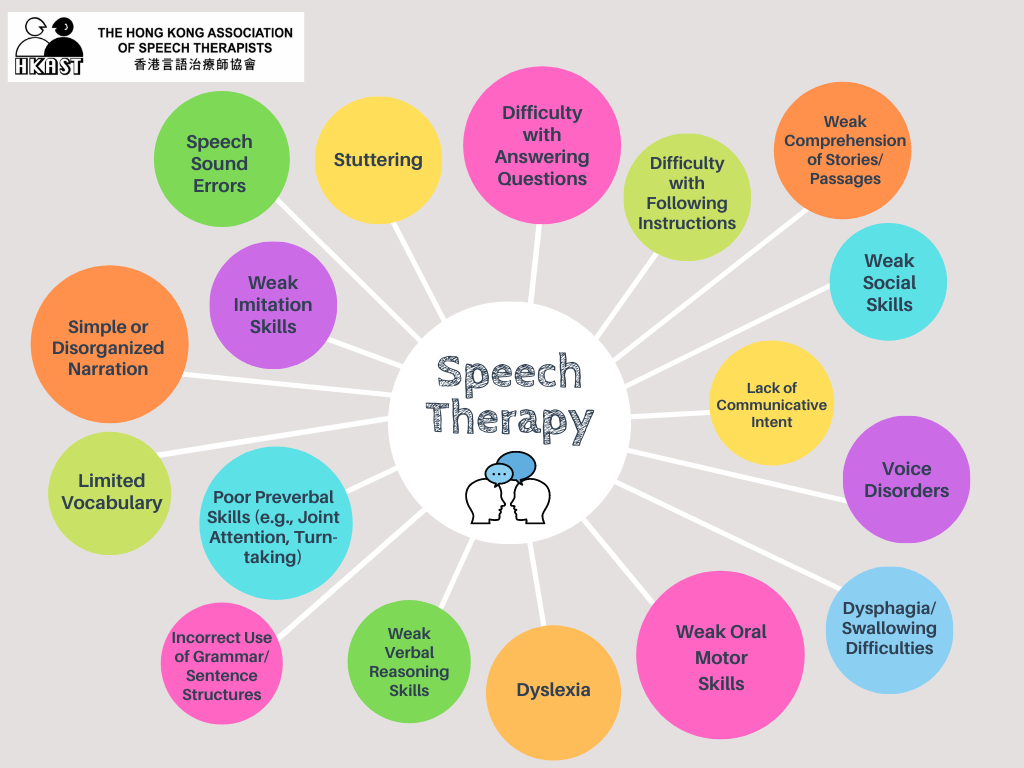How Does Speech Therapy Work?
Welcome, curious minds! Have you ever wondered how speech therapy works? Well, you’re in the right place to find out. In this article, we’ll explore the fascinating world of speech therapy and discover how it can help improve communication skills. So, let’s dive in and uncover the secrets behind this incredible practice!
Picture this: you’re having a conversation with a friend, and suddenly, you can’t find the right words to express yourself. It can be frustrating, right? That’s where speech therapy comes in. This specialized form of therapy focuses on helping individuals improve their ability to speak, understand, and communicate effectively. Whether it’s a speech delay, a stutter, or difficulty pronouncing certain sounds, speech therapy is designed to address these challenges head-on.
So, how does it actually work? Well, speech therapy sessions are typically personalized to meet the unique needs of each individual. A speech-language pathologist, also known as an SLP, will work closely with you or your child to assess the specific communication difficulties and develop a tailored treatment plan. Through a variety of engaging activities, games, exercises, and even technology, speech therapy aims to strengthen speech and language skills, boost confidence, and enhance overall communication abilities.
Get ready to embark on an exciting journey into the world of speech therapy! In the upcoming sections, we’ll explore the different techniques and strategies used in speech therapy, discuss the benefits it can bring, and reveal some helpful tips for maximizing your speech therapy experience. So, let’s unravel the mysteries together and discover the wonders of speech therapy! Let’s dive in!
Discovering how speech therapy works can help individuals understand the process of improving communication skills. Through a combination of evaluations, personalized exercises, and guidance from speech-language pathologists, speech therapy addresses various communication disorders. Techniques may include articulation therapy, language intervention, and augmentative and alternative communication. Speech therapy aims to enhance pronunciation, language comprehension, social communication, and overall communication abilities. Sessions may be conducted individually or in groups, depending on specific needs. Understanding the fundamentals of speech therapy can pave the way for successful interventions and improved communication.

How Does Speech Therapy Work: Unlocking the Power of Communication
Speech therapy is a highly effective intervention that helps individuals improve their communication skills. Whether a person is experiencing difficulties with speech, language, or swallowing, speech therapy offers tailored techniques and strategies to address these challenges. This article will delve into the intricacies of speech therapy, exploring the various techniques used, the benefits it offers, and the impact it can make on an individual’s quality of life.
The Role of a Speech-Language Pathologist
Speech therapy is conducted by a highly trained professional known as a speech-language pathologist (SLP). These experts possess comprehensive knowledge of human communication and the various disorders that can arise. The first step in speech therapy involves a detailed assessment carried out by the SLP. By evaluating speech patterns, language abilities, and comprehension skills, the SLP can identify the specific areas of concern and develop an individualized treatment plan.
Once the assessment is complete, the SLP designs therapy sessions tailored to the individual’s needs. These sessions can be conducted in a variety of settings, including clinics, schools, or even the individual’s home. With their expertise and knowledge of evidence-based interventions, SLPs employ a range of techniques to enhance communication skills and address any underlying issues.
Techniques and Strategies Used in Speech Therapy
Speech therapy utilizes a variety of techniques and strategies depending on the needs of the individual. Some common techniques include:
1. Articulation Therapy: This technique focuses on improving the production of specific speech sounds. The SLP guides the individual through exercises and repetitive drills to enhance clarity of speech.
2. Language Therapy: Language therapy targets difficulties in understanding and using language. It includes activities such as vocabulary building, sentence construction, and comprehension exercises.
3. Augmentative and Alternative Communication (AAC): For individuals with severe communication impairments, AAC systems like sign language or devices that generate speech can be implemented. The SLP helps the individual learn and effectively utilize these communication aids.
4. Fluency Therapy: This technique is beneficial for individuals experiencing stuttering or other fluency disorders. SLPs utilize techniques like breathing exercises and gradual speech rate control to improve fluency.
5. Swallowing Therapy: Speech therapy also addresses swallowing difficulties, known as dysphagia. SLPs work with individuals to improve muscle control and coordination for safe swallowing.
These are just a few examples of the techniques employed in speech therapy. The precise approach varies based on the individual’s unique needs, goals, and progress.
The Benefits of Speech Therapy
Speech therapy offers an array of benefits for individuals with communication challenges. Here are some key advantages:
1. Improved Communication Skills: Speech therapy can significantly enhance an individual’s ability to express themselves clearly and confidently. It can improve articulation, fluency, vocabulary, and overall language skills, enabling effective communication in various settings.
2. Enhanced Social Interactions: Communication difficulties can often lead to social isolation and frustration. Speech therapy equips individuals with the tools necessary to engage in meaningful conversations, fostering positive social interactions and relationships.
3. Academic Success: For children, speech therapy can aid in academic achievements. Improved language skills contribute to better reading, writing, and comprehension abilities, enabling success in the classroom.
4. Increased Confidence and Self-Esteem: Overcoming communication challenges can boost an individual’s confidence and self-esteem. As they develop better communication skills, they gain a newfound sense of empowerment and achieve a higher quality of life.
5. Swallowing Improvement: Speech therapy also addresses swallowing difficulties, ensuring individuals can safely consume food and liquids without the risk of choking or aspiration.
The benefits of speech therapy extend beyond these points, and they are highly individualized based on the specific needs of each person. With consistent therapy and support, remarkable progress can be made in improving communication abilities.
Tips for Maximizing the Benefits of Speech Therapy
After exploring how speech therapy works and the advantages it offers, it is essential to consider some tips for getting the most out of the therapy process. These tips can help individuals or their caregivers make the most of each session and optimize progress:
1. Regular Attendance and Active Participation
Consistency is key when it comes to speech therapy. Attending scheduled sessions regularly allows for steady progress. Moreover, active participation in therapy exercises and implementing strategies taught by the SLP in daily life accelerates improvement.
2. Practice and Reinforcement
Speech therapy exercises and techniques may require practice outside of therapy sessions. Practicing regularly helps reinforce newly acquired skills and ensures their integration into everyday communication.
3. Open Communication with the Speech-Language Pathologist
Maintaining open communication with the SLP is essential. Sharing any concerns, questions, or updates about progress empowers the therapist to modify the treatment plan accordingly and address any emerging challenges.
4. Patience and Encouragement
Progress in speech therapy takes time, and it is crucial to remain patient throughout the process. Encouragement and positive reinforcement can greatly motivate individuals to persist and overcome obstacles.
5. Collaboration with Other Professionals
In some cases, speech therapy may benefit from collaboration with other professionals, such as occupational therapists or psychologists. Collaborative efforts can provide a holistic approach to addressing underlying factors that may impact communication.
By following these tips, individuals can optimize their speech therapy experience and achieve the best possible outcomes for their communication skills.
Conclusion
Speech therapy is an invaluable resource for individuals with speech, language, or swallowing difficulties. Through the expertise of speech-language pathologists and a range of techniques tailored to individual needs, speech therapy unlocks the power of effective communication. By improving articulation, language skills, fluency, and swallowing abilities, speech therapy enhances an individual’s quality of life, fosters social connections, and supports academic success. With dedication, consistency, and a collaborative approach, the benefits of speech therapy can be maximized, leading to significant improvements in communication skills and overall well-being.
Key Takeaways: How Does Speech Therapy Work
- Speech therapy helps individuals improve their communication skills through various techniques and exercises.
- Speech therapists assess and diagnose speech and language disorders to create personalized treatment plans.
- Therapists use different strategies, such as articulation therapy, language intervention, and voice therapy, to address specific communication challenges.
- Speech therapy can include activities like practicing sounds, improving vocabulary, and learning proper breath control.
- Regular therapy sessions, combined with practice at home, can lead to significant improvements in speech and language skills.
Frequently Asked Questions
Welcome to our Frequently Asked Questions section, where we answer some common queries about how speech therapy works.
1. What is the goal of speech therapy?
The goal of speech therapy is to improve communication skills and address speech and language disorders. A speech therapist, also known as a speech-language pathologist, works with individuals to improve their ability to speak, understand, and communicate effectively.
Through various techniques, therapists help individuals develop language skills, articulate sounds and words, improve voice quality, and enhance nonverbal communication skills such as body language and gestures. The ultimate aim is to help individuals overcome challenges and communicate more confidently and efficiently in their daily lives.
2. How is speech therapy personalized to each individual?
Speech therapy is highly personalized to meet the unique needs of each individual. When someone begins speech therapy, a speech-language pathologist conducts an evaluation to assess their specific communication challenges. This evaluation typically includes observing speech and language skills, conducting tests, and gathering information from the individual, their parents, or other caregivers.
Based on the evaluation, the speech therapist creates a personalized treatment plan that targets the individual’s specific areas of difficulty. The plan may include exercises, techniques, and activities designed to address speech sounds, language comprehension, social communication, voice disorders, or any other communication difficulty the person may be experiencing.
3. What techniques are used in speech therapy?
Speech therapists use a variety of techniques in therapy sessions depending on the specific needs of each individual. Some common techniques include:
– Articulation therapy: This technique focuses on improving speech sound production.
– Language intervention: This technique targets the development of language skills, including vocabulary, grammar, and understanding of language.
– Augmentative and alternative communication (AAC): This technique involves using alternative communication methods, such as gestures, communication devices, or sign language, for individuals who have difficulty speaking.
– Voice therapy: This technique helps individuals with vocal disorders improve their voice quality, pitch, and volume.
– Fluency therapy: This technique helps individuals who stutter or have other fluency disorders improve their speech fluency.
4. How long does speech therapy take?
The duration of speech therapy depends on various factors, including the nature and severity of the communication disorder, the individual’s motivation and participation, and the frequency of therapy sessions. Typically, speech therapy can range from a few months to several years.
The frequency and duration of therapy sessions may vary, with some individuals attending sessions once a week and others more frequently. It’s important to note that progress in speech therapy is gradual, and therapy may continue until the individual has achieved their therapy goals and is comfortable using their improved communication skills in everyday life.
5. Can speech therapy be effective for adults?
Absolutely! Speech therapy is not only for children but also highly beneficial for adults. Adults may seek speech therapy to improve communication skills affected by issues such as stroke, brain injury, or neurological conditions.
Speech therapy for adults focuses on improving speech clarity, language skills, and overall communication abilities. Therapists work closely with adults to address specific challenges they may face in social or professional situations. By targeting these challenges, speech therapy can help adults regain confidence in their communication skills, enhancing their quality of life.
Summary
So, to sum it all up, speech therapy is a way to help people improve their speaking skills. It involves working with a speech therapist who will teach you exercises and techniques to make your speech clearer. They might also help you with things like breathing and swallowing. Speech therapy can be really helpful for people who have trouble with things like stuttering, lisping, or pronouncing certain sounds. It’s all about giving you the tools and support you need to communicate confidently and effectively. So don’t worry if you’re having difficulty with your speech – speech therapy is here to help!




